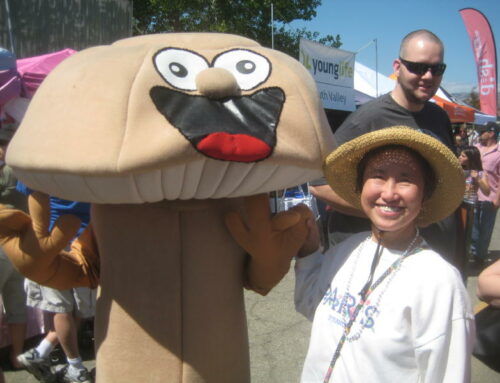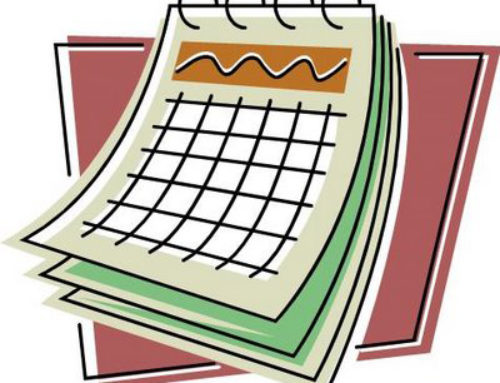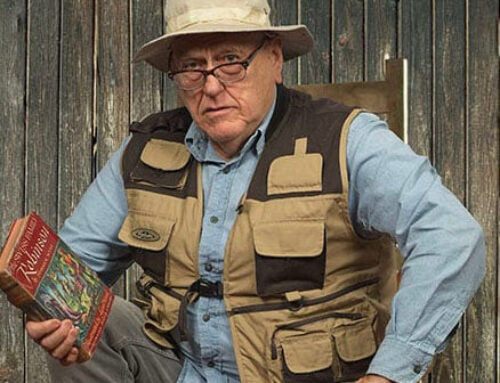Published in the Oct. 14-27, 2015 issue of Morgan Hill Life
By Frances Nance

Photo by Frances Nance
Hikers at Henry W. Coe State Park viewed a sunset panorama overlooking the South Valley on the evening of the Sept. 27 lunar eclipse.
On the evening of Sunday Sept. 27, I joined a group of hikers at Henry W. Coe State Park to witness the Super Blood Moon eclipse. We sauntered to the Ponderosa Trail loop to view the sunset, the first part of the agenda for the evening. The short hike provided varied terrain and almost 180 degree views across the South Valley. A cool pine tree grove stood majestically and provided us a canopy of shade as we hiked through. It felt as if we were in a wilderness forest in a far-away place as rabbits bolted and deer pranced in the distance.
Nature did not disappoint us. As the glowing orange sun slid behind the silhouetted Santa Cruz Mountains, in the afterglow, hues of fiery reds, robust oranges, light to deep dusky purples and pale wispy pinks made the western sky reminiscent of a Van Gogh painting. Vibrant colors reverberated on the billowy to wispy cloud formations.
I’m convinced Henry Coe is the perfect place to view sunsets. Not only does the park stay open all evening, but I could have brought my tent and stayed for an evening campout.
When our group of astronomical adventurers had taken enough pictures of the sunset display, we shouldered our photography gear and headed over to an east-facing meadow where a group of about 15 people had already gathered to watch the main event – the lunar eclipse. A few women sat next to bulging backpacks strewed on an old wooden picnic table. Nearby, a group of young men stood beside telescopes set up in anticipation of the evening’s main night-sky event. We greeted old friends, and we made new friends as the entourage waited in anticipation for the debut. Lively conversations ranged from commute times to NASA missions to neuroplasticity.
By 7:45 p.m., a few folks decided we would not see the Moon because the cloud cover was too thick. In the dark, with no Moon to light the way, we gingerly picked our way down the trail and around the twists and turns while those of us with flashlights lit the way for those without. As we turned the corner, the night sky lit up with dazzling luminescence. The lights of Morgan Hill shimmered in the distance on the valley floor about 2,000 feet below. It served as a reminder of how close and yet how far away we were from urban civilization.
Just as we strolled into the parking lot, the Moon edged out of the dispersing veil of clouds. Cheers rose from the gathered crowds as we quickly located a picnic table and sat down. For the rest of the evening, the Moon peeked out of the wispy cloud cover. When eclipsed, the Moon appeared like a lonely planet, with the pocks of craters and marias clearly viewed through the pair of binoculars someone in our group passed around. The face of the orb hung in the sky as a levitating object, a sunless object, a large, dead, circular mass dangling in black space.
I’d heard that when the sun began to shine on the Moon’s surface, the temperature rose by 500 degrees. We watched as a sliver of light hit the lunar surface and grew larger until the Moon was completely bathed and brightly dazzled in the night sky.
As we said our goodbyes, I thought about the fun and delightful evening during my visit to Henry Coe Park. How lucky we are to have a wilderness area so close to Morgan Hill where we can view the spectacle of sunsets, then stroll over to the Moon-rise meadow within 15 minutes and not stress about getting out before dark.
Frances Nance is a member of the Morgan Hill Independence Day Celebrations committee. She wrote this column for Morgan Hill Life.







